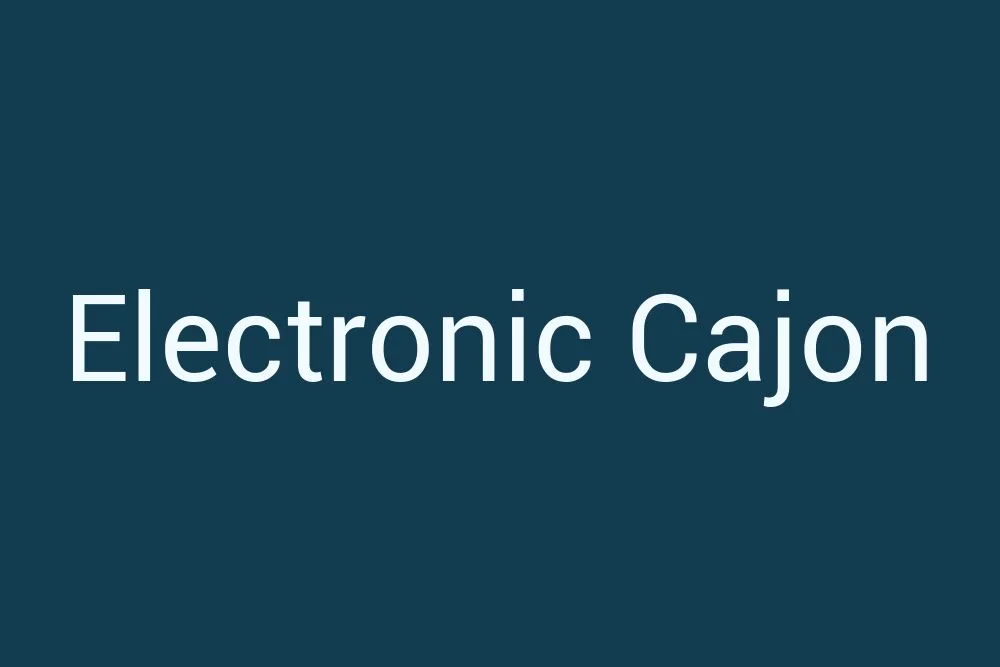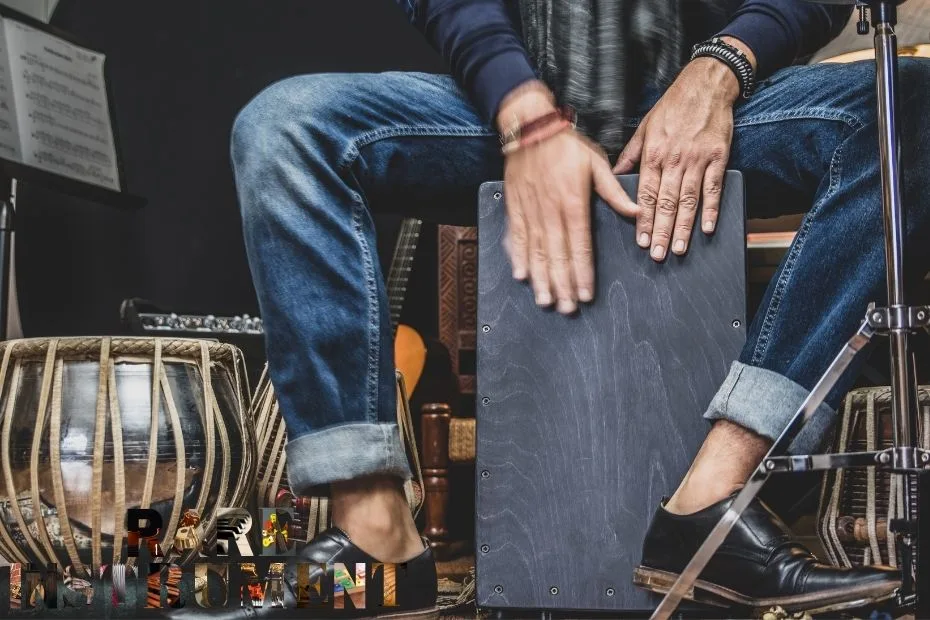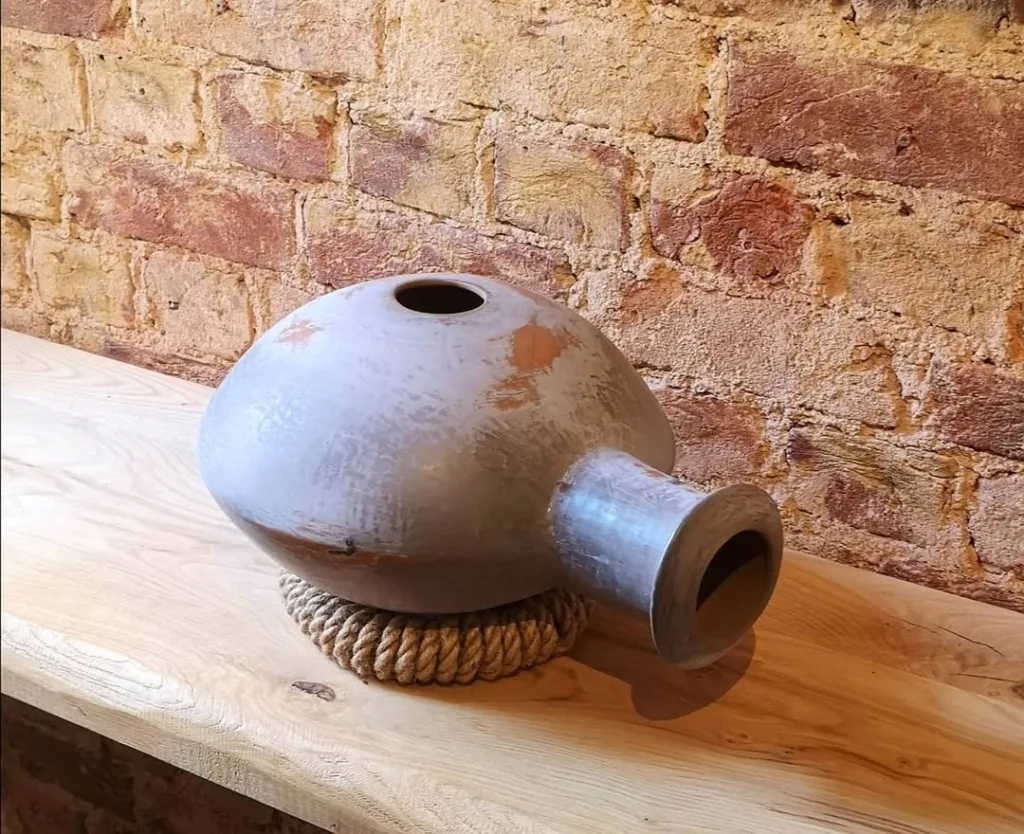Electronic Cajon: The Hybrid Groove Box for Modern Players
Looking for the earthy feel of a wooden cajon with the versatility of a drum machine? The electronic cajon (often called the e‑cajon or hybrid cajon) bridges hand percussion and digital sound design. It delivers realistic cajon tones, layered electronic kits, and stage-ready connectivity—while keeping the sit-and-play ergonomics players love.
| Feature | What It Is | Why It Matters |
|---|---|---|
| Onboard Sounds | Preset kits (cajon, snares, kicks, claps, percussion, FX) | Switch genres instantly without extra gear |
| Trigger Sensitivity | Sensors detect taps, slaps, and dynamics | Captures expressive playing with accurate velocity |
| Layering | Blend acoustic box tone with electronic samples | Thicker sound without losing the wooden feel |
| MIDI/USB | Connect to DAWs, samplers, or apps | Record, trigger custom sounds, or control software |
| Battery Power | Rechargeable or AA options on some models | Busk or rehearse anywhere—no outlet needed |
| Latency | Time between hit and sound | Low latency keeps your groove tight on stage |
What Is an Electronic Cajon?
An electronic cajon is a box drum with built-in triggers and a sound engine. It looks and feels like a standard cajon—typically around 12″ × 12″ × 19″—but inside are sensors that capture your strokes (tap, slap, bass). Those triggers feed a digital module that outputs acoustic cajon tones, drum kit elements, percussion, and even atmospheric textures. Some models are fully electronic shells; others are true hybrid cajons that amplify the natural wood tone while layering samples for extra punch.
In practice, you sit and play as usual. The front plate (tapa) and hot zones map to different sounds: bass in the center, snare on the top corners, and additional rims or claps on the sides. With a single instrument, you can go from a folk session to an EDM-inflected groove in seconds.
Key Features to Look For
1) Sound Quality and Layering
Great e-cajons offer high-resolution samples, natural decay, and realistic dynamics. Look for layering control so you can blend the acoustic sound with an electronic kick or snare. This is ideal when you need more low-end without miking, or a crisp pop for outdoor gigs.
2) Trigger Zones and Sensitivity
More zones mean more assignable sounds. Adjustable sensitivity and velocity curves help tailor the response to your touch—critical for ghost notes and delicate finger rolls. If possible, test whether rim shots, slaps, and palm tones are recognized distinctly.
3) Connectivity: Audio, MIDI, and Expansion
Essential connections include line out to PA, a headphone out for silent practice, and often USB/MIDI for recording and triggering software instruments. Some units have aux in to play along with tracks. A few offer Bluetooth audio input for practice (note: Bluetooth adds delay; not ideal for live monitoring). Expansion jacks may allow foot switches or extra pads.
4) Power and Portability
For buskers and educators, battery-powered operation is a win. If you’ll gig frequently, check battery life and whether the unit can also run on an AC adapter. Weight matters, too—aim near the typical cajon range (~4–6 kg) for easy carry.
5) Built-in Speaker vs. Line Out
Many hybrid cajons feature a built-in speaker for personal monitoring and small rooms. For larger venues, a clean line output to a mixer will give FOH engineers control over your level and EQ. Ideally, you’ll have separate volume for speaker and line out.
6) Construction and Feel
The playing surface should still feel like a wooden cajon. Look for a quality tapa (often birch or beech), solid shell, and comfortable edges. Adjustable snare wires or internal snares can further shape your acoustic tone before electronics enter the chain.
7) Low Latency
Even a few milliseconds of delay can make your groove feel sluggish. Seek instruments advertised with low-latency triggering. Trust your hands: if the response feels instant, you’ll play better.
Who Benefits Most from an Electronic Cajon?
- Buskers: Portable, loud enough with built-in speaker or small amp. Layer kicks and claps for street-ready backbeats without extra musicians.
- Live acoustic acts: Blend wooden warmth with pop polish. One box covers ballads, funk, and dance encores.
- Studio creators: Use MIDI to capture nuanced hand patterns and replace sounds later. No need for complex multi-miking.
- Educators: Instant access to world percussion timbres for demonstrations, with headphone practice for classrooms.
- Worship teams: Quiet stages benefit from controlled output and consistent tone week to week.
- Home practice: Headphones at night, full vibe by day.
How to Dial in a Great Electronic Cajon Sound
1) Start with Gain Staging
Set the cajon’s input sensitivity (if available) so your hardest slaps don’t clip, but ghost notes still register. On the mixer, keep preamps conservative and let the cajon’s master volume do the work.
2) Use Smart Layering
For pop and worship, layer a tight electronic kick under the acoustic bass zone at 20–40% blend. Add a light snare sample on the top corners for extra snap. Keep it subtle—if listeners notice the sample, back it off.
3) Tweak Velocity Curves
Choose a curve that matches your touch. A linear curve suits dynamic players; a soft curve helps lighter touch players reach louder levels without overexertion.
4) EQ and Compression
- Bass: Add a gentle boost around 80–120 Hz if the room is thin; cut 250–350 Hz to reduce boxiness.
- Snare: A touch around 3–5 kHz brings presence; roll off below 100 Hz to avoid mud.
- Compression: A light 3:1 ratio on the cajon bus can smooth peaks while keeping dynamics alive.
5) Monitor Smartly
Use the cajon’s headphone or a small wedge; avoid relying on Bluetooth for live monitoring due to latency. If your model has an internal speaker, keep its volume just high enough to feel the groove without causing feedback on stage mics.
Choosing the Right Size and Form Factor
Classic cajon bodies hover around 12″ × 12″ × 19″, a sweet spot for comfort and projection. Travel-friendly e-cajons may be slightly smaller, trading low-end for portability. If you have longer legs or prefer a higher seat, a taller 20–21″ shell can improve posture and bass depth.
Price Ranges (What to Expect)
- Entry-level: Affordable models with core sounds, a few zones, and basic outputs. Great for practice and casual gigs.
- Mid-range: Better samples, more zones, layering options, and often USB/MIDI. Solid for serious performers.
- Pro: Top-tier triggering, expansive libraries, assignable zones, multiple outs, and rugged build. Ideal for touring and studio work.
Maintenance and Care
- Wipe the tapa with a slightly damp cloth; avoid harsh cleaners.
- Protect ports and controls with a padded gig bag.
- Keep firmware (if applicable) updated for improved stability and features.
- Charge batteries properly and store at moderate temperatures.
Common Questions
Can an electronic cajon replace a full drum kit?
For stripped-down gigs, yes—it can cover kick, snare, and percussion convincingly. For high-energy rock or complex cymbal work, pair it with additional pads or a small hybrid setup.
Will it still sound like wood?
Hybrid designs preserve the acoustic character while layering digital sounds. Fully electronic shells emulate wood via samples. If the organic feel is crucial, choose a hybrid with quality tapa and snares.
Is setup complicated?
Most are plug-and-play: power up, select a kit, set volume. Fine-tuning sensitivity and curves takes a few minutes but pays off in feel.
What about foot control?
Some models accept foot switches or expression pedals to trigger kick or open/close hi-hat samples—great for adding groove layers.
Final Beat
The electronic cajon delivers tactile, seat-of-the-pants playing with the flexibility modern music demands. Whether you’re busking downtown, recording expressive hand rhythms into a DAW, or leading a duo in a coffeehouse, it’s a compact, creative powerhouse. Choose low latency, musical samples, and the right size for your body—and you’ll have a groove box that travels anywhere.
Ready to upgrade your setup? Start with a hybrid model that layers a tight kick under your bass zone, add MIDI for studio days, and keep a battery charged for impromptu gigs. Your next set just got a lot more versatile.



